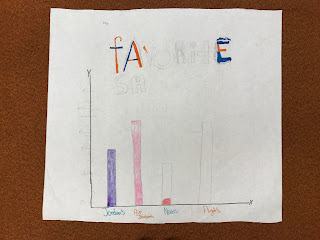This week concluded my time full time teaching. I enjoyed
teaching full time so much that I don’t want to stop. I wish I could continue
to teach my transitioning adults.
During my time as full time teaching I learned so much about
teach special education. The biggest lesson I learned was to be flexible.
Something that I pride myself in is my careful planning. While teaching my
transitioning adults I learned that what I plan is not always what will happen.
There were many lesson when I had to think on my toes and adjust my lessons
according to the answers the students gave. For example, I taught a lesson
about word problems with time. The lesson was all about adding time. For example:
If Jonny started his homework at
7:00 and spent 1:00 on his homework, what time did he finish his work?
My morning class caught on right away and was able to answer
the questions without a problem. My afternoon class struggled with adding
without a manipulative or something tangible. So, I had to think on my feet. I
used the practice clock in the classroom to teach the students that when the
big hand makes an entire rotation around the clock that one hour has passed.
From there, I had to practice with the students to make sure they understood that
rotating the big hand around the clock will help them answer the questions. I
had to step away from my planning to help my students understand how to find an
hour first.
Illinois Professional Teaching Standard 5 states, “The
competent teacher differentiates instruction by using a variety of strategies
that support critical and creative thinking, problem-solving, and continuous
growth and learning. This teacher understands that the classroom is a dynamic
environment requiring ongoing modification of instruction to enhance learning
for each student.” Performance Indicator 5J states that the competent teacher, “monitors
and adjusts strategies in response to feedback from the student.” I have
learned that my job is not plan excellent lessons, but to teach excellent
lessons. The only way I can actually teach an excellent lesson is when my
students are growing and learning meaningful content in a relevant and engaging
way. My lessons may be planned perfectly, but if I am not flexible enough to
adjust my lessons according to my student’s understanding then I am not
teaching well at all.
I look forward to my last week of student teaching. I will
spend a lot of time this week getting to observe other classroom with students
that are lower functioning then my students. I also get to bring my students to
my campus on a field trip this Tuesday. My students will be practicing their
social and vocational skills by serving the students at my college cookies and
hot chocolate.







